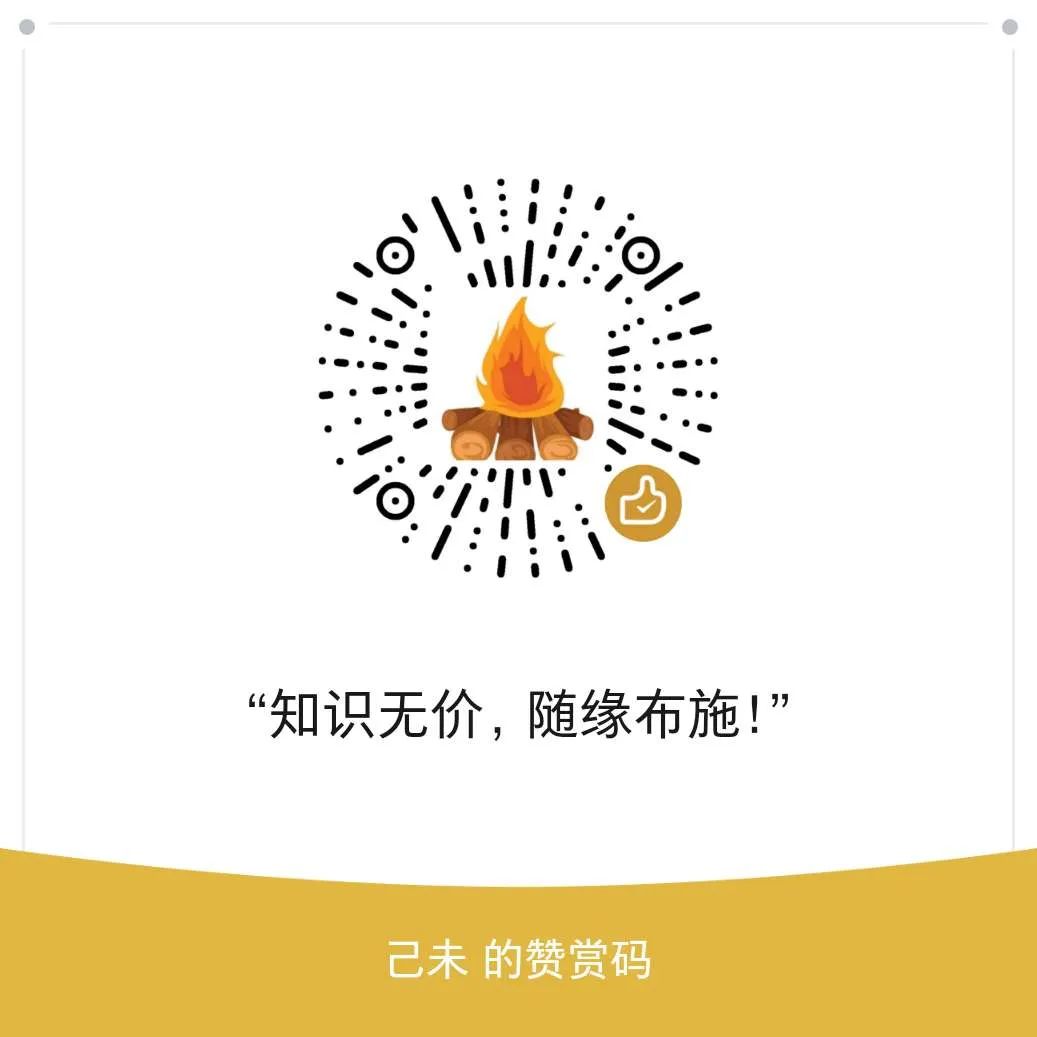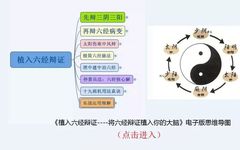


The Eight Principles of Diagnosis (Ba Gang Bian Zheng) is the overarching framework for various diagnostic methods in Traditional Chinese Medicine (TCM).
Diagnosis involves analyzing and identifying the symptoms of a disease, which is a primary process and method for understanding and diagnosing illnesses. “Bian” means to discern and analyze, while “Zheng” refers to the syndrome, which is a comprehensive manifestation of the disordered relationships between the body and its environment, as well as among the organs, meridians, qi, blood, and body fluids under the influence of pathogenic factors. Therefore, clarifying a specific syndrome summarizes the pathological conditions of the disease’s development stage, including the causes, locations, strengths of the pathogenic and righteous forces, and the imbalances of yin and yang.
The process of diagnosis is based on theories of the organs, meridians, qi, blood, body fluids, and pathogenic factors, and involves synthesizing, summarizing, analyzing, reasoning, judging, and clarifying the internal relationships among the symptoms and signs collected through the four diagnostic methods: observation, listening, inquiry, and palpation.
Diagnosis and treatment are two crucial interrelated aspects of TCM’s principles, methods, formulas, and medicines in clinical practice. Diagnosis is the foundation for understanding the disease, while treatment involves taking appropriate therapeutic measures based on the diagnosed syndrome. Diagnosis is the premise and basis for treatment, while treatment is the objective and an objective standard for verifying the correctness of the diagnosis.
“Symptom” refers to individual signs, which are recognized similarly in both Western and Chinese medicine, such as headache, fever, cough, palpitations, nausea, etc.
“Disease” refers to the name of the illness. In TCM, only a few disease names correspond with those in Western medicine, such as measles, diphtheria, tetanus, asthma, dysentery, and heat stroke, while most terms differ. Due to the differences in theoretical systems, the understanding of diseases varies between the two medical traditions. Western medicine’s understanding of diseases is based on human anatomy and pathophysiology, with clinical diagnoses relying on the patient’s subjective symptoms, physical examinations, and laboratory tests. TCM, on the other hand, views diseases as results of imbalances in yin and yang within the body, with clinical diagnosis primarily based on the patient’s symptoms and signs (such as tongue and pulse diagnosis), without necessarily identifying a disease name but rather clarifying the “syndrome”.
“Syndrome” (Zheng) is an abbreviation for evidence and symptoms; it is not merely a collection of symptoms or subjective feelings but a group of signs and is TCM’s diagnostic approach to diseases. A “syndrome” is a set of specific clinical manifestations (symptoms, signs, etc.) that encompasses aspects such as the cause, location of the disease, nature of the pathological changes, and the comparative strength of the righteous and pathogenic forces. The “syndrome” is derived from analyzing symptoms and signs and summarizing them into a concept that better explains the essence of the disease.
TCM diagnosis has developed through long-term clinical practice, employing various methods, primarily including the Eight Principles of Diagnosis, etiology-based diagnosis, diagnosis based on qi, blood, essence, and body fluids, organ diagnosis, and diagnosis based on the defensive, qi, nutritive blood, and the three burners, among others. Among these, the Eight Principles of Diagnosis serves as the overarching framework for all diagnostic methods.
The Eight Principles of Diagnosis is based on the materials obtained from the four diagnostic methods, conducting a comprehensive analysis to explore the nature of the disease, the location of the pathological changes, the severity of the disease, the strength of the body’s response, and the comparative strength of the righteous and pathogenic forces, summarizing them into eight categories of syndromes: yin, yang, exterior, interior, cold, heat, deficiency, and excess. This is a fundamental method of TCM diagnosis, encompassing all diagnostic methods and summarizing the commonalities from the individual characteristics of various diagnostic approaches, playing a role in simplifying complexity and highlighting key points in the diagnostic process.
Although the manifestations of diseases are extremely complex, they can generally be categorized into the Eight Principles. The overall categories of diseases include yin syndromes and yang syndromes; the depth of the disease can be classified as exterior or interior; the imbalances of yin and yang can lead to heat syndromes (yang excess or yin deficiency) or cold syndromes (yang deficiency or yin excess); the strength of the pathogenic and righteous forces can be classified as excess syndromes (when pathogenic forces are strong) or deficiency syndromes (when righteous forces are weak). Therefore, the Eight Principles of Diagnosis analyzes the myriad changes in diseases according to the simple dichotomies of exterior and interior, cold and heat, deficiency and excess, yin and yang, revealing the contradictions within the pathological changes, thus capturing the essence of whether the disease is exterior or interior, cold or heat, deficient or excess, yin or yang. This embodies the fundamental spirit of the Eight Principles.
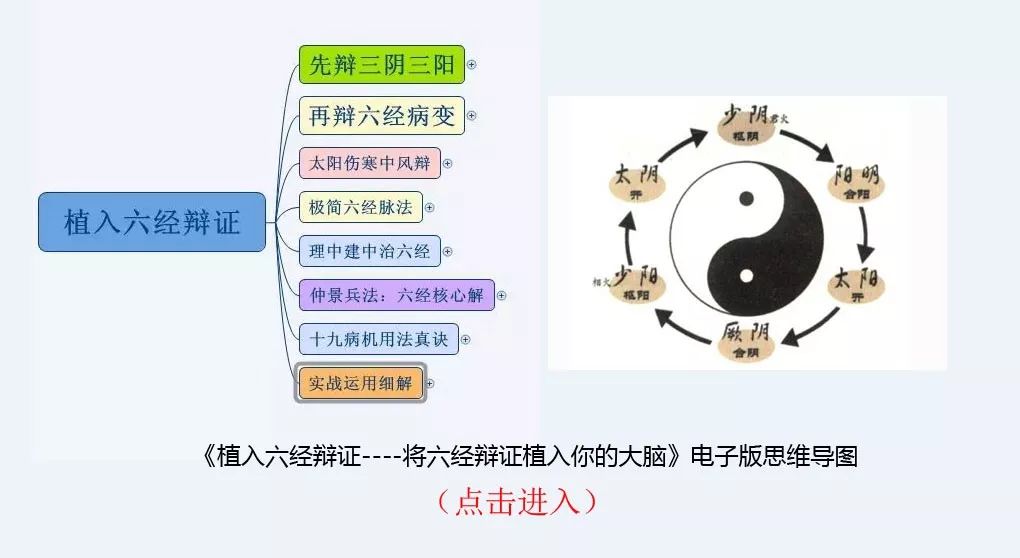
1. Exterior and Interior
Exterior and interior indicate the depth of the disease and the severity of the condition. Generally speaking, the skin, hair, and superficial muscles belong to the exterior; the organs, blood vessels, bone marrow, and internal meridians belong to the interior. Exterior syndromes indicate that the disease is superficial and mild; interior syndromes indicate that the disease is deep and severe.
(1) Exterior Syndromes
Exterior syndromes are those with superficial manifestations on the skin. Generally, they occur when external pathogenic factors invade the body through the skin and nose, leading to a series of symptoms as the righteous qi (Wei Qi) resists the pathogenic factors, often seen in the initial stages of externally contracted diseases. Exterior syndromes are characterized by sudden onset, short duration, superficial location, and mild severity. They are commonly seen in the early stages of externally contracted febrile diseases, such as upper respiratory infections, acute infectious diseases, and other initial stages of infectious diseases.
Main symptoms: Fever and chills (or aversion to wind), headache, thin white tongue coating, floating pulse, often accompanied by symptoms such as soreness in the limbs and joints, nasal congestion, and cough.
Due to the differentiation of external pathogenic factors into cold and heat, and the varying strengths of the righteous qi’s ability to resist these factors, exterior syndromes can be further divided into exterior cold, exterior heat, exterior deficiency, and exterior excess syndromes.
1. Exterior Cold Syndrome
Main symptoms: Severe aversion to cold, mild fever, significant pain in the head and body, no sweating, clear nasal discharge, no thirst. Pale red tongue, thin white and moist coating, floating and tight pulse.
Pathogenesis: Cold pathogens are trapped in the skin or muscle layers, leading to a struggle between the righteous and pathogenic forces, hence the aversion to cold and mild fever. The invasion of pathogenic qi into the superficial meridians causes stagnation in the circulation of Wei Qi and blood, resulting in pain in the head, body, and limbs. The pulse is floating due to the struggle between the righteous and pathogenic forces.
Treatment principle: Release the exterior with warm acrid herbs.
Commonly used formula: Ma Huang Tang (Ephedra Decoction)
2. Exterior Heat Syndrome
Main symptoms: Severe fever, mild aversion to cold, headache, sore throat, sweating, thick yellow nasal discharge, thirst. Slightly red tongue, thin white coating that is not moist, floating and rapid pulse.
Pathogenesis: The struggle between the righteous and pathogenic forces at the exterior leads to fever and mild aversion to cold. Heat pathogens invade the Wei level, causing sweating due to loss of control over the sweat pores. Heat damages body fluids, leading to thirst. The presence of heat pathogens at the exterior results in a floating and rapid pulse.
Treatment principle: Release the exterior with cool acrid herbs.
Commonly used formula: Yin Qiao San (Honeysuckle and Forsythia Powder)
3. Exterior Deficiency Syndrome
Main symptoms: Exterior syndrome with aversion to wind, aversion to cold, and sweating. Pale tongue, thin white coating, floating and weak pulse.
Pathogenesis: The patient has a weak constitution, and the Wei Yang is not firm, leading to aversion to wind and sweating, with a floating and weak pulse.
Treatment principle: Harmonize the nutritive and defensive qi, release the exterior and resolve muscle tension.
Commonly used formula: Gui Zhi Tang (Cinnamon Twig Decoction)
4. Exterior Excess Syndrome
Main symptoms: Fever, aversion to cold, body aches, no sweating. Pale red tongue, thin white coating, floating and forceful pulse.
Pathogenesis: The pathogenic forces are strong, and the righteous forces are not weak; the pathogenic forces are trapped in the skin, leading to fever and aversion to cold without sweating, with a floating and forceful pulse.
Treatment principle: Release the exterior with warm acrid herbs.
Commonly used formula: Ma Huang Tang (Ephedra Decoction)
Distinguishing between exterior cold and exterior heat syndromes is based on the severity of aversion to cold and fever, as well as tongue and pulse characteristics. Exterior cold syndrome is characterized by severe aversion to cold and mild fever, while exterior heat syndrome presents with severe fever and mild aversion to cold. The tongue coating in exterior cold syndrome is thin, white, and moist, with a floating and tight pulse, while in exterior heat syndrome, the tongue coating is thin, white, and not moist, with a floating and rapid pulse. Additionally, wind-cold pathogens can become stagnant and transform into heat, leading to a transition from exterior cold syndrome to exterior heat syndrome. Exterior cold (or heat) syndrome can also transform into interior heat syndrome after the external pathogenic factors invade the interior.
Distinguishing between exterior deficiency and exterior excess syndromes involves considering the patient’s constitution, with sweating indicating deficiency and no sweating indicating excess. Exterior excess syndrome is often seen in younger, robust individuals, while exterior deficiency syndrome is more common in the elderly, weak, or chronically ill patients.
(2) Interior Syndromes
Interior syndromes, in contrast to exterior syndromes, refer to conditions that are deeper within the body (organs, qi, blood, bone marrow, etc.). The causes of interior syndromes can generally be categorized into three situations: first, the progression of an exterior syndrome that has not resolved, leading to the invasion of the interior organs; second, direct invasion of the interior organs by external pathogens, such as abdominal cold or excessive consumption of cold foods leading to interior cold syndrome; third, internal injuries from emotional disturbances, overexertion, or dietary factors that directly impair organ function, such as dizziness and pain in the liver, palpitations and shortness of breath in the heart, cough and wheezing in the lungs, abdominal distension and diarrhea in the spleen, and low back pain and urinary retention in the kidneys. Therefore, the clinical manifestations of interior syndromes are complex, and all symptoms that are not classified as exterior syndromes fall under interior syndromes. In cases of externally contracted diseases, interior syndromes require differentiation based on etiology and the relationship between the defensive, qi, nutritive blood, while in cases of internal injuries, organ differentiation is the primary focus. Interior syndromes need to be differentiated into interior cold, interior heat, interior deficiency, and interior excess (discussed in the context of cold-heat and deficiency-excess differentiation).
Distinguishing between exterior and interior syndromes is primarily based on the patient’s history, the nature of the symptoms, and changes in tongue coating and pulse. Generally, new or acute illnesses are more likely to be exterior syndromes, while chronic or long-standing illnesses are often interior syndromes. Fever and aversion to cold indicate exterior syndromes, while fever without aversion to cold or only cold without fever indicate interior syndromes. The tongue coating in exterior syndromes often shows no changes or only slight redness at the edges, while interior syndromes frequently exhibit abnormal tongue coatings. A floating pulse indicates an exterior syndrome, while a sinking pulse indicates an interior syndrome.
(3) Half-Exterior Half-Interior Syndromes
Half-exterior half-interior syndromes refer to conditions where the pathogenic factors are neither fully exterior nor fully interior, presenting symptoms that are neither typical of exterior nor interior syndromes.
Main symptoms: Alternating chills and fever, chest and hypochondriac fullness, bitter taste in the mouth, dry throat, irritability, nausea, loss of appetite, and dizziness. Red tip of the tongue, mixed yellow and white coating, and a wiry pulse.
Pathogenesis: The struggle between the righteous and pathogenic forces occurs in the half-exterior half-interior region, leading to alternating chills and fever. The invasion of the half-exterior half-interior region affects the gallbladder meridian, resulting in chest and hypochondriac fullness and a bitter taste in the mouth. Heat in the gallbladder disrupts the harmony between the liver and stomach, leading to irritability, dizziness, nausea, and loss of appetite.
Treatment principle: Harmonize and resolve the half-exterior half-interior condition.
Commonly used formula: Xiao Chai Hu Tang (Minor Bupleurum Decoction)
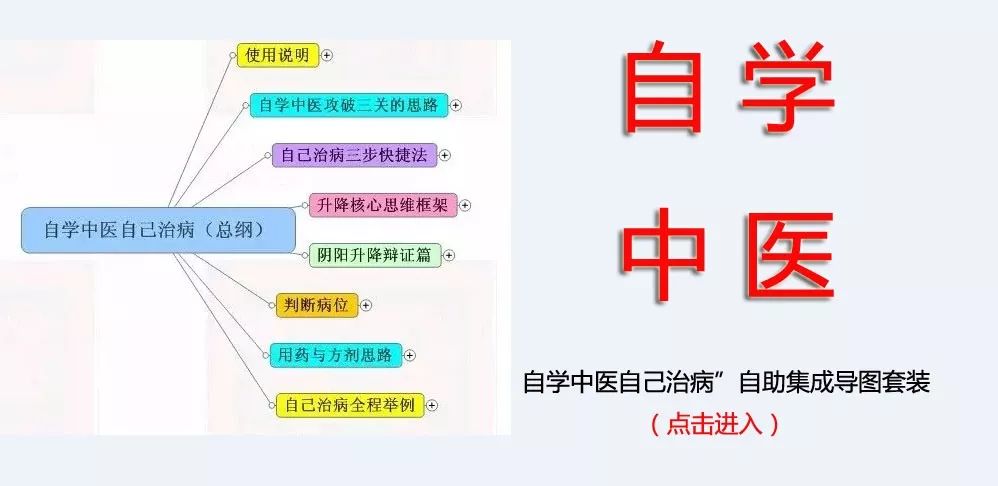
(4) Simultaneous Exterior and Interior Disease (Mixed Exterior and Interior)
Simultaneous exterior and interior disease refers to the occurrence of both exterior and interior syndromes at the same time. There are three common situations: first, the initial onset of the disease presents both exterior and interior syndromes; second, at the onset of the disease, only exterior symptoms are present, but as the pathogenic factors invade the interior, interior symptoms appear while exterior symptoms persist, also referred to as simultaneous exterior and interior disease; third, if the original disease has not resolved and is complicated by another condition, such as an internal injury combined with an external pathogenic invasion, or an external condition leading to dietary harm, this also falls under simultaneous exterior and interior disease. The treatment principle is to resolve both the exterior and interior simultaneously.
2. Cold and Heat
Cold and heat are two principles used to differentiate the nature of diseases, summarizing the states of yin and yang within the body. Generally, cold syndromes are manifestations of insufficient yang qi or the invasion of cold pathogens, while heat syndromes are manifestations of excessive yang qi or the invasion of heat pathogens. The saying goes, “Excessive yang leads to heat, excessive yin leads to cold; insufficient yang leads to cold, insufficient yin leads to heat.” Differentiating between cold and heat is the basis for using warming or cooling herbs in treatment, as the principle states, “Treat cold with heat, treat heat with cold.”
(1) Cold Syndromes
Cold syndromes are manifestations of the invasion of cold pathogens (such as cold or damp pathogens) or the deficiency of yang qi, leading to a decline in organ function and activity. Cold syndromes can be divided into exterior cold and interior cold, with exterior cold already discussed in the context of exterior syndromes; here, we refer to interior cold syndromes.
Main symptoms: Aversion to cold, cold limbs, no thirst or preference for warm drinks, pale complexion, cough with white phlegm, abdominal pain relieved by warmth, loose stools, clear and frequent urination. Pale tongue, white coating, and a sinking and slow pulse.
Pathogenesis: Yang deficiency leads to coldness in the body, hence the aversion to cold and cold limbs. Cold in the spleen and stomach leads to abdominal pain relieved by warmth, and the sluggish yang qi results in a sinking and slow pulse.
Treatment principle: Warm the center and dispel cold.
Commonly used formula: Fu Zi Li Zhong Tang (Aconite Decoction to Regulate the Middle)
(2) Heat Syndromes
Heat syndromes are manifestations of the invasion of heat pathogens (such as wind, heat, or fire pathogens) or excessive yang qi, leading to hyperactivity of organ function and depletion of body fluids. Heat syndromes can be divided into exterior heat and interior heat, with exterior heat already discussed in the context of exterior syndromes; here, we refer to interior heat syndromes.
Main symptoms: Fever, no aversion to cold, irritability, thirst with a preference for cold drinks, red face and eyes, cough with yellow phlegm, abdominal pain relieved by coolness, constipation, and short, red urination. Red tongue, yellow coating, and a rapid pulse.
Pathogenesis: Excessive yang leads to fever and a preference for coolness, heat damages body fluids, leading to thirst, and short, red urination, with constipation. The rapid pulse indicates the presence of heat.
Treatment principle: Clear heat.
Commonly used formula: Bai Hu Tang (White Tiger Decoction) and others.
(3) Excess Heat and Deficiency Heat
Excess heat syndromes caused by the invasion of heat pathogens differ from deficiency heat syndromes caused by the depletion of body fluids or hyperactivity of organ function, with different clinical manifestations and treatment principles. See the table below.
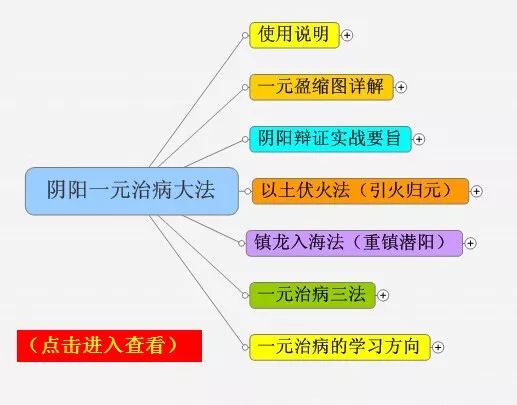
Table 3-3 Differentiation between Excess Heat and Deficiency Heat
Excess Heat Syndrome
Deficiency Heat Syndrome
Acute onset, short duration
Slow onset, long duration
High fever, aversion to heat, profuse sweating
Low fever, tidal fever, night sweats
Delirium, severe cases may lead to madness
Five hearts heat, insomnia, and vivid dreams
Thirst with a preference for drinking
Dry mouth, but little drinking
Coughing up yellow, thick phlegm, purulent phlegm, or blood-streaked phlegm
Little phlegm, sticky phlegm, or blood-streaked phlegm
Constipation, short, red urination
Small volume of stool, yellow, scanty urination
Red face and eyes
Flushed cheeks
Red tongue, thick yellow coating
Red tongue, little or no coating
Rapid, forceful pulse
Thin, rapid pulse
Heat pathogens are intense
Yin fluids are depleted, leading to deficiency heat
Often caused by heat pathogens (e.g., infections)
Often caused by hyperactivity of organ function
Treat with heat-clearing and fire-purging methods
Treat with nourishing yin and clearing heat methods
(4) True Cold and False Heat
In the critical stages of disease development, one may observe phenomena such as “true cold appearing as heat” and “true heat appearing as cold.” Clinically, a condition that is essentially a heat syndrome but presents with cold symptoms is termed “true heat, false cold,” while a condition that is essentially a cold syndrome but presents with heat symptoms is termed “true cold, false heat.” This situation often indicates a severe disease state. If the essence is not grasped, one may be misled by the false appearance, leading to misdiagnosis and mistreatment.
1. “True Cold, False Heat”: For example, patients with chronic wasting diseases often present with body heat, flushed cheeks, restlessness, black tongue coating, and a floating pulse. On the surface, this appears to be a heat syndrome, but the patient prefers warm coverings, appears listless and apathetic, curls up while lying down, has a pale tongue, black and moist coating, and a floating but weak pulse. This indicates that the internal yin is excessive, while the external yang is deficient, thus the essence remains a cold syndrome, termed “true cold, false heat.” Treatment should focus on warming the interior and reviving yang.
2. “True Heat, False Cold”: This refers to a true heat condition presenting with false cold symptoms. For instance, in severe heat-related illnesses, one may observe a patient appearing listless, drowsy, and reluctant to speak, with cold hands and feet, and a sinking pulse. On the surface, this seems like a cold syndrome, but there are signs of heat in the mouth and nose, burning sensations in the chest and abdomen, thirst with a preference for cold drinks, constipation, and short, red urination. The tongue is red and dry, with a yellow coating, and the pulse, though sinking, is rapid and forceful. This indicates that internal yang heat is trapped and cannot express outwardly, thus the essence is a heat syndrome, termed “true heat, false cold.” Treatment should focus on clearing internal heat and promoting yang qi.
In general, the manifestations of cold and heat are superficial and represent a false appearance; the internal states of cold and heat represent the essence of the condition.
When differentiating between cold and heat syndromes, one should not rely solely on a single symptom or sign but should observe the overall presentation of the disease, especially the aspects of cold and heat, thirst or lack thereof, complexion, temperature of the limbs, urination and defecation, tongue appearance, and pulse characteristics. For instance, aversion to cold and preference for warmth indicates cold, while fever and preference for coolness indicate heat; lack of thirst indicates cold, while thirst with a preference for drinking indicates heat; a red complexion indicates heat; cold hands and feet often indicate cold, while hot limbs indicate heat; clear and frequent urination, loose stools indicate cold, while short, red urination and constipation indicate heat; a pale tongue with a white coating indicates cold, while a red tongue with a yellow coating indicates heat, etc. From the comparison of cold and heat syndromes, it can be seen that cold syndromes are associated with excessive yin and often co-occur with yang deficiency, while heat syndromes are associated with excessive yang and often present with signs of yin fluid depletion.
3. Deficiency and Excess
Deficiency and excess are two principles used to differentiate the strength of the righteous qi and the severity of the pathogenic forces in the body. Generally, deficiency refers to insufficient righteous qi, and deficiency syndromes are manifestations of this insufficiency, while excess refers to the overabundance of pathogenic forces, and excess syndromes are manifestations of this overabundance. The Suwen states: “When the pathogenic forces are strong, it is excess; when the essence is depleted, it is deficiency.” From the perspective of the comparative strength of the righteous and pathogenic forces, deficiency syndromes indicate insufficient righteous qi, but the pathogenic forces are not strong; excess syndromes indicate strong pathogenic forces, but the righteous qi has not yet declined, representing a fierce struggle between the righteous and pathogenic forces. Differentiating between deficiency and excess is the basis for determining whether to tonify the righteous qi (nourish deficiency) or to drain the pathogenic forces (reduce excess), as the principle states, “Nourish the deficient, drain the excess.”
(1) Deficiency Syndromes
Deficiency syndromes can arise from a weak constitution (either congenital or acquired), prolonged illness damaging the righteous qi, excessive blood loss, loss of essence, profuse sweating, or damage to the righteous qi from external pathogens.
Main symptoms: Pale or sallow complexion, listlessness, fatigue, palpitations, shortness of breath, cold limbs, or five hearts heat, spontaneous sweating, night sweats, loose stools, frequent urination, pale tongue with little or no coating, and a weak pulse.
Clinically, deficiency syndromes can be categorized into qi deficiency, blood deficiency, yin deficiency, and yang deficiency, with organ-specific deficiencies (such as lung qi deficiency, heart blood deficiency, liver yin deficiency, spleen qi deficiency, kidney yang deficiency, etc.) discussed in organ differentiation.
Table 3-4 Differentiation of Qi Deficiency, Blood Deficiency, Yin Deficiency, and Yang Deficiency
Classification Common Symptoms Distinct Symptoms Treatment Common Formulas
Qi Deficiency Pale or sallow complexion, listlessness, fatigue, low voice, reluctance to speak, spontaneous sweating, poor appetite, pale and swollen tongue, weak pulse, shortness of breath, fatigue upon exertion, etc. Notable symptoms include weak pulse. Tonify qi with Si Jun Zi Tang (Four Gentlemen Decoction) and others.
Yang Deficiency Aversion to cold, cold limbs, clear and frequent urination, diarrhea with clear stools, slow pulse. Tonify yang with Shen Qi Wan (Kidney Qi Pill), Ren Shen Rong Wan (Ginseng and Deer Antler Pill), etc.
Blood Deficiency Weight loss, dizziness, blurred vision, insomnia, palpitations, pale complexion, numbness in hands and feet, pale lips and nails, pale tongue, thin and weak pulse. Nourish blood with Si Wu Tang (Four Substance Decoction) and others.
Yin Deficiency Low-grade fever or tidal fever, flushed cheeks, five hearts heat, dry mouth, dry throat, night sweats, red tongue, thin or cracked tongue, little or no coating, thin and rapid pulse. Nourish yin with Liu Wei Di Huang Wan (Six Flavor Rehmannia Pill) and others.
From the above table, it can be seen that qi deficiency and yang deficiency both indicate insufficient yang qi, thus presenting similar clinical manifestations, including pale complexion, fatigue, spontaneous sweating, etc. However, they differ in that qi deficiency does not present with cold symptoms, while yang deficiency does present with cold symptoms—aversion to cold, cold limbs, and a slow pulse. Blood deficiency and yin deficiency both indicate insufficient yin fluids, thus presenting similar symptoms such as weight loss, dizziness, palpitations, and insomnia. However, they differ in that blood deficiency does not present with heat symptoms, while yin deficiency presents with heat symptoms due to the inability of yin fluids to restrain yang qi, leading to symptoms such as low-grade fever or tidal fever, dry mouth, and dry throat.

(2) Excess Syndromes
Excess syndromes arise from a robust constitution of the patient, sudden illness due to external pathogenic invasion, or internal dysfunction of organs leading to the accumulation of pathological products such as qi stagnation, blood stasis, phlegm, dampness, parasites, or food stagnation.
Clinical manifestations vary based on the nature of the pathogenic forces and the organs affected, characterized by strong pathogenic forces, weak righteous qi, and a fierce struggle between the two. Common symptoms include high fever, flushed face, irritability, delirium, loud voice, abdominal distension and pain that resists pressure, excessive phlegm, constipation, and difficulty urinating, or the presence of blood stasis, swelling, water retention, food stagnation, or parasites, with thick and greasy tongue coating and a forceful pulse.
Treatment principle: Drain excess and attack the pathogenic forces is the main method for treating excess syndromes, as the principle states, “If it is excess, drain it.” However, different methods such as clearing heat, promoting bowel movements, draining water, dispelling phlegm, regulating qi, invigorating blood, and eliminating stagnation will be discussed in relevant chapters.
Distinguishing between deficiency and excess syndromes can be considered from several aspects: new or acute illnesses, short duration are often excess syndromes; chronic or long-standing illnesses are often deficiency syndromes; external pathogenic factors are often excess syndromes, while internal injuries are often deficiency syndromes; younger, robust individuals are often excess syndromes, while older, weaker individuals are often deficiency syndromes; and clinical symptoms and signs can be referenced in the table below.
Table 3-5 Differentiation between Deficiency and Excess Syndromes
Symptoms and Signs Treatment Principles
Deficiency Syndromes Pale, sallow, or dull complexion, listlessness, fatigue, low voice, reluctance to speak, hidden pain that is relieved by pressure, pale tongue with little or no coating, weak pulse. Tonify deficiency.
Excess Syndromes Flushed face, irritability, delirium, loud voice, severe pain that resists pressure, red tongue with thick yellow coating, forceful pulse. Drain excess.
4. Yin and Yang
Yin and yang are two principles used to differentiate the nature of diseases, serving as the overarching framework for the Eight Principles, summarizing the concepts of exterior and interior, cold and heat, deficiency and excess. The “Classifications of Yin and Yang” states: “In human diseases, there must be a basis, either rooted in yin or rooted in yang. Although the manifestations are numerous, the essence is one,” indicating that although symptoms may be complex and varied, they ultimately fall into the two categories of yin and yang. Therefore, understanding whether a condition is yin or yang is crucial in diagnosis, as generally, exterior, excess, and heat syndromes belong to yang, while interior, deficiency, and cold syndromes belong to yin.
(1) Yin Syndromes
Yin syndromes are characterized by a deficiency of yang qi and an excess of yin. Generally, yin syndromes present with cold symptoms, such as aversion to cold, absence of fever, cold limbs, listlessness, and a sinking or weak pulse. These syndromes arise from the low function of the organs and a weakened response of the body, often seen in older or chronically ill patients, presenting a picture of deficiency and cold.
(2) Yang Syndromes
Yang syndromes are characterized by an excess of yang qi and a preserved righteous qi. Generally, yang syndromes present with heat symptoms, such as fever, aversion to heat, warm limbs, irritability, thirst, and a rapid and forceful pulse. These syndromes arise from the hyperfunction of the organs and are often seen in robust individuals, presenting a picture of excess heat.
The main clinical manifestations of yin and yang syndromes can be referenced in the table below.
Table 3-6 Differentiation between Yin and Yang Syndromes
Symptoms
Four Diagnostic Methods
Yin Syndromes Yang Syndromes
Observation Pale or dull complexion, heavy body, curled up posture, listlessness, pale and swollen tongue, white and moist coating. Flushed or bright red complexion, restlessness, dry lips, red tongue, thick coating, possibly cracked or blackened.
Listening Low voice, quiet and few words, weak breathing, shortness of breath. Loud voice, irritability, rapid breathing, wheezing.
Inquiry Reduced appetite, preference for warmth, no thirst, bland taste, loose stools, clear and frequent urination. Dry mouth, bitter taste, preference for coolness, thirst, constipation, short and red urination.
Pulse Pain relieved by pressure, cold limbs, sinking, thin, rough, slow, weak pulse. Pain that resists pressure, warm limbs, floating, rapid, forceful pulse.
(3) Loss of Yin and Loss of Yang
Loss of yin and loss of yang are two dangerous syndromes that may occur during the disease process, often seen in cases of high fever, profuse sweating, severe vomiting and diarrhea, or excessive blood loss, leading to rapid loss of yin fluids or yang qi, commonly seen in shock patients. Although loss of yin and loss of yang are classified as deficiency syndromes, they are distinct from general deficiency syndromes due to their critical nature.
The clinical manifestations of loss of yin and loss of yang, in addition to various critical symptoms of the underlying disease, often present with varying degrees of sweating. However, the sweating in loss of yin is hot and sticky, accompanied by hot skin, warm hands and feet, thirst with a preference for cold drinks, a red and dry tongue, and a rapid and weak pulse, indicating depletion of yin and extreme yang; while in loss of yang, the sweating is profuse and cool, accompanied by aversion to cold, lethargy, cold limbs, and a weak pulse, indicating loss of yang and excess yin. Since yin and yang are interdependent, depletion of yin fluids leads to the dispersion of yang qi, while depletion of yang qi leads to the inability of yin fluids to generate, thus the clinical manifestations of loss of yin and loss of yang are difficult to separate, and they can rapidly transform into one another, with differences in priority.
The treatment for both loss of yin and loss of yang focuses on supporting the righteous qi and stabilizing the condition. For loss of yin, one should nourish qi and restrain yin, generate fluids, and replenish the original qi to prevent loss of yang, commonly using formulas such as Sheng Mai San (Generate the Pulse Powder); for loss of yang, one should nourish qi, stabilize the condition, and revive yang, commonly using formulas such as Du Shen Tang (Ginseng Decoction) and Shen Fu Tang (Ginseng and Aconite Decoction).
The differentiation of loss of yin and loss of yang can be referenced in the table below.
Table 3-7 Differentiation of Loss of Yin and Loss of Yang
Sweating Four Limbs Other Symptoms Tongue and Pulse Treatment Principles
Loss of Yin Sweating is hot, salty, and sticky, with a warm sensation. Aversion to heat, flushed complexion, overall heat, irritability, confusion, shortness of breath, thirst with a preference for cold drinks. Red and dry tongue, thin and rapid pulse. Nourish qi and restrain yin, generate fluids.
Loss of Yang Sweating is cool, bland, and not sticky, with cold limbs. Aversion to cold, pale complexion, overall coldness, lethargy, weak pulse. Pale and moist tongue, weak pulse. Nourish qi and stabilize the condition, revive yang.
5. The Interrelationship of the Eight Principles and the Application of Eight Principles Diagnosis
The distinctions among exterior and interior, cold and heat, deficiency and excess, and yin and yang are not merely isolated and static but are complex, interrelated, and capable of transformation. In summary, the Eight Principles exhibit relationships of “coexistence,” “mixing,” and “transformation.”
(1) Coexistence
“Coexistence” refers to the simultaneous appearance of symptoms from two or more principles. For example, in the early stages of an externally contracted febrile disease, one may observe exterior symptoms, but further differentiation is needed to determine whether there is coexisting cold or heat, thus leading to the classification of exterior cold or exterior heat syndromes. In cases of prolonged illness, deficiency syndromes may also require further differentiation to determine whether they are deficiency cold or deficiency heat syndromes. The appearance of coexisting symptoms should not be viewed equally; rather, there is a primary and secondary relationship. For instance, exterior cold and exterior heat syndromes are primarily classified as exterior syndromes, with cold or heat being secondary. Treatment should focus on releasing the exterior, using warm acrid herbs for exterior cold and cool acrid herbs for exterior heat. Similarly, deficiency cold and deficiency heat syndromes are primarily classified as deficiency syndromes, with cold or heat being secondary, and treatment should focus on tonifying deficiency, using warming methods for deficiency yang and nourishing methods for deficiency yin. In cases of exterior and interior coexistence, the primary syndrome should be determined based on the specific condition.
(2) Mixing
“Mixing” refers to the simultaneous presence of opposing symptoms from two principles, such as cold-heat mixing, deficiency-excess mixing, and exterior-interior mixing (commonly referred to as simultaneous exterior and interior disease). Additionally, during the progression of a disease, false appearances may arise, such as true heat appearing as false cold and true cold appearing as false heat. Therefore, during the diagnostic process, careful observation and comprehensive analysis are necessary to discern the truth and grasp the essence, avoiding misdiagnosis and mistreatment that could delay the condition.
(3) Transformation
“Transformation” refers to the phenomenon where symptoms of one principle transform into those of its opposite. The relationships between exterior and interior, cold and heat, deficiency and excess, and yin and yang are not only opposing but can also transform into one another under certain conditions. For example, an exterior cold syndrome characterized by aversion to cold and fever may, due to disease progression or improper treatment, lead to the pathogenic factors entering the interior, resulting in a transformation from exterior cold to interior heat syndrome. Excess syndromes may also transform into deficiency syndromes due to misdiagnosis or inadequate treatment, leading to prolonged illness where the pathogenic forces diminish but the righteous qi is also damaged, gradually transforming into deficiency syndromes. Conversely, deficiency syndromes may lead to the generation of phlegm, dampness, qi stagnation, or blood stasis, resulting in various excess syndromes. Transformation can only occur under specific conditions, and during diagnosis, it is essential to continuously observe changes in the pathogenesis, diagnose and treat promptly to prevent the disease from worsening and to promote recovery.
The application of the Eight Principles in diagnosis begins with differentiating between exterior and interior to determine the location of the disease; then differentiating between cold and heat, deficiency and excess, to understand the nature of the disease and the comparative strength of the righteous and pathogenic forces; finally, a comprehensive summary can be made using the concept of yin and yang.
Conclusion
The Eight Principles of Diagnosis is a method for diagnosing diseases by summarizing and analyzing them from the perspectives of exterior and interior, cold and heat, deficiency and excess, and yin and yang. Although it should be combined with etiology-based diagnosis and the differentiation of the defensive, qi, and nutritive blood for a more comprehensive diagnosis, it serves as the foundation for various diagnostic methods, simplifying complexity and highlighting key points.
The Eight Principles are not static but can transform under certain conditions; exterior syndromes can progress to interior syndromes as the disease worsens, while interior syndromes can resolve and return to the exterior as the condition improves. Heat syndromes can transform into cold syndromes, and excess syndromes can transform into deficiency syndromes, often indicating that the righteous qi is gradually recovering. Conversely, cold syndromes can transform into heat syndromes, and deficiency syndromes can transform into excess syndromes, indicating that the pathogenic forces are gaining strength.
Although the Eight Principles have distinct manifestations, they are rarely isolated and often exhibit complex relationships of “coexistence” and “mixing,” and may sometimes present as “false appearances.” Therefore, during the diagnostic process, it is crucial to conduct thorough investigations, think critically, and grasp the essence behind the phenomena to ensure accurate analysis, correct diagnosis, and appropriate treatment.
Recommended Books for Purchase:
(Reprint Statement: This article is reprinted from the internet, and the copyright belongs to the original author. If there is any infringement, please contact us for deletion!)
Further Reading of Original Articles:
Six Meridians and Six Major Disease Locations—Three Yin Cold Pathogen Locations! (Understanding the Last Article on Cold Damage)—> Click to Read
Six Meridians and Six Major Disease Locations—Shaoyang Meridian Disease Locations! (A Small Chai Hu Decoction Dominates)—> Click to Read
Six Meridians and Six Major Disease Locations—Yangming Meridian Disease Locations! (Crucial for Treating Damp-Heat)—> Click to Read
Six Meridians and Six Major Disease Locations—Taiyang Meridian Disease Locations! (Understanding the Taiyang Meridian)—> Click to Read
Six Meridians and Six Layers of Vital Energy Restoration! (Complete Explanation of Self-Healing Energy)—> Click to Read
Comprehensive Explanation of Cervical Spondylosis! (Classical Treatment + Secret External Treatment)—> Click to Read
Comprehensive Explanation of Toothache! (Cold Damage Thinking, Pathogenesis Differentiation, Classical Formula and Medicinal Symbols)—> Click to ReadComprehensive Explanation of Insomnia! (Pathogenesis Differentiation + Core Ideas for Stabilizing Yang)—> Click to ReadComprehensive Explanation of Fever! (Pathogenesis Differentiation in Cold Damage, Internal and External Treatment Methods)—> Click to Read
Comprehensive Explanation of Headache! (Learning the Key Points of Differentiation)—> Click to Read
For more exclusive TCM secrets, scan the QR code below to follow our public account:

TCM Internal Treatment Course:
“Simplified Classical Formulas Online Class” one-on-one, from differentiation to using classical formulas, fully imparted!!! (Click to Enter)
TCM External Treatment Course:
“Hands-On TCM” can treat diseases without any prior knowledge!!! (One-on-one teaching) (Click to Enter)
TCM Learning Mind Map Series:
“Embedding Six Meridians Differentiation”—-Embedding Six Meridians Differentiation into Your Brain Electronic Mind Map (Click to Enter)
Self-learning TCM and self-treatment” Self-help Integrated Mind Map Set (Click to Enter)
Yin-Yang Unified Treatment Method (Returning Complex TCM to the Unified Path) (Click to Enter)
Comprehensive Dialectics of Circular Motion (Micro and Macro Yin-Yang Ascension, Organ Positioning) Mind Map Version (Click to Enter)
If this article has helped you
Please scan to reward,as you wish

